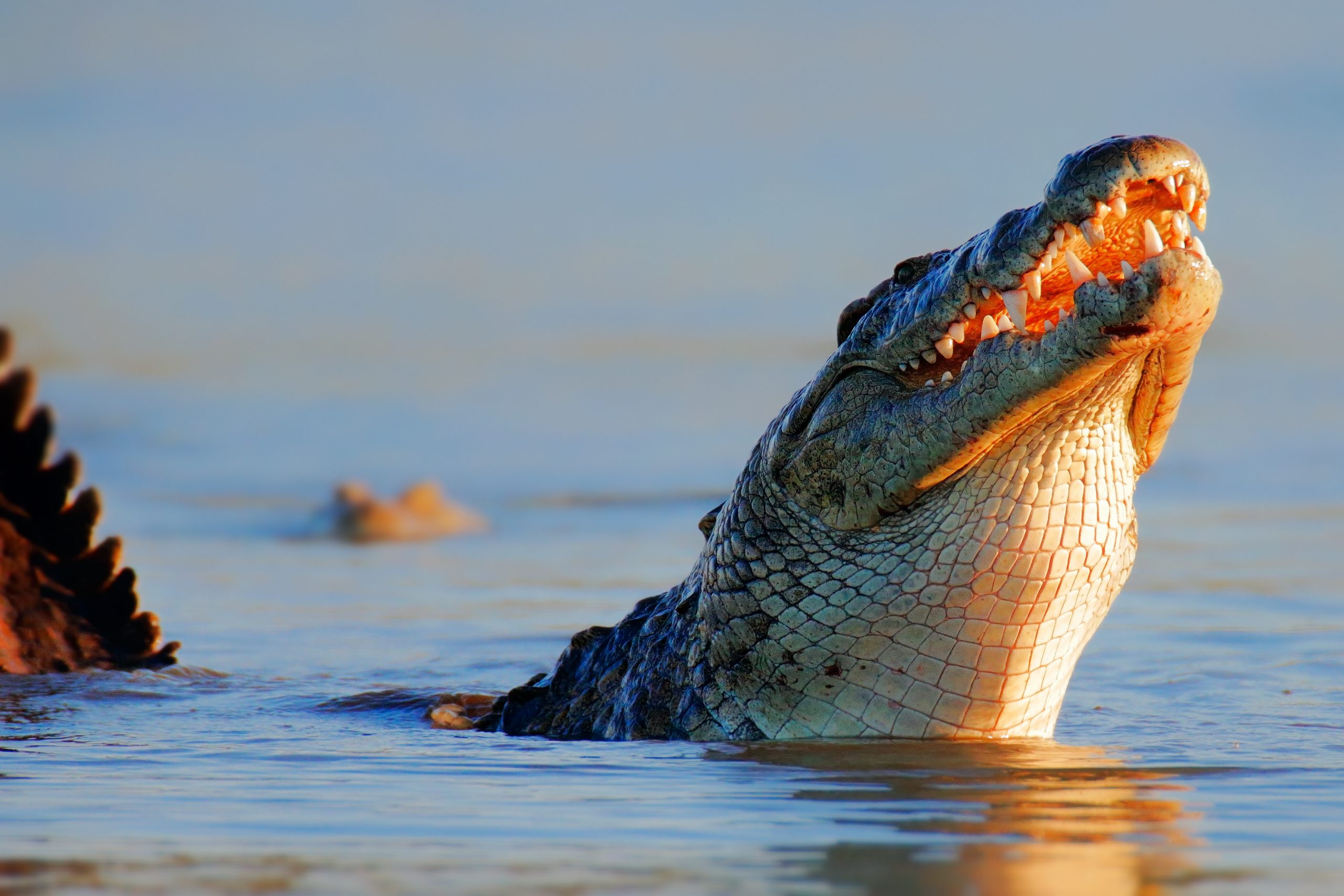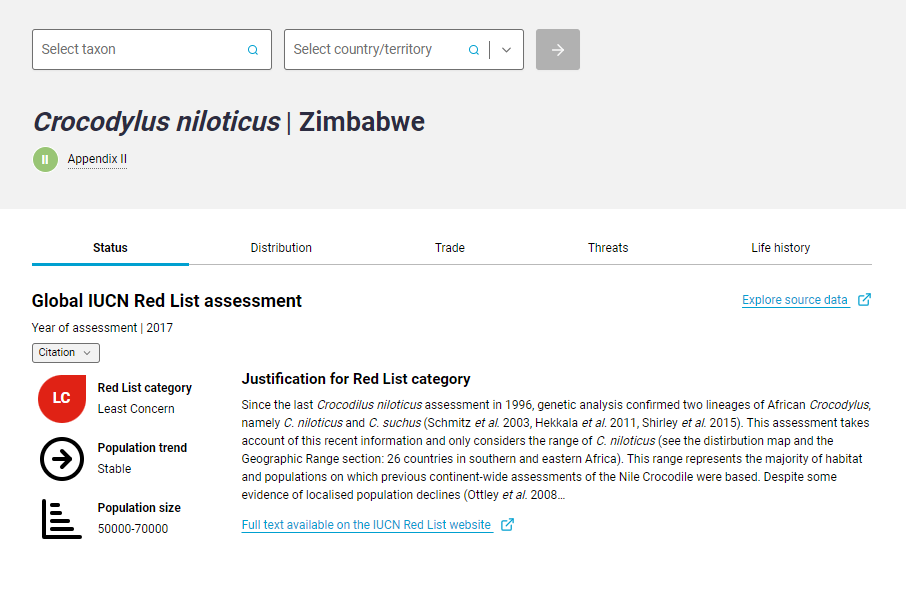News
UNEP-WCMC and IUCN launch tool to help countries ensure that wildlife trade is sustainable

News | Mar 2024
A new online interactive tool to help countries assess the sustainability of trading internationally listed wild plants and animals has been launched today by the UN Environment Programme World Conservation Monitoring Centre (UNEP-WCMC) and International Union for Conservation of Nature (IUCN).
The Convention on International Trade in Endangered Species of Wild Fauna and Flora (CITES) is the international agreement that sets wildlife trade protections for nearly 41,000 plants and animals to ensure that international trade does not threaten species’ survival in the wild. More than 1.3 billion individual CITES-listed plants and animals were reported to be internationally traded between 2011 and 2020, with the value of exports estimated at more than USD 11 billion in 2016-2020. One of the most widely traded wild-sourced wildlife commodities is reptile skin, which is used in the leather industry for luxury goods such as handbags.
To trade CITES-listed plants or animals, countries that are Party to the Convention, are required to scientifically assess whether international trade will be detrimental to the survival of a species in the wild. Before an export permit can be issued, a country’s CITES Scientific Authority (SA) should show that a certain level of international trade in a CITES-listed species will not threaten its survival. This decision is called a non-detriment finding (NDF). As part of an NDF, a country can apply conditions, such as setting an annual export quota, normally reassessed every year. NDFs can require a large amount of data and information on the species, including its conservation status, distribution, trade trends, threats posed and information on the species relevant to the impact of harvesting and trade, such as its biological characteristics.
The NDF Support Tool launched today by UNEP-WCMC and IUCN brings together, for the first time, over 30 species and trade datasets used by CITES SAs in decision-making onto a single interactive platform. Users can search by CITES-listed species and country/territory combinations to quickly explore and compile the data they need for their assessments.
This gives SAs a starting point in deciding how much risk may be posed due to international trade in a species and whether there is a need to investigate further, depending on the risk level determined. As well as exporting countries, the NDF Support Tool can be used by countries that require an NDF to be issued in order to import wildlife.

The NDF Support Tool is directly linked to Species+, the Checklist of CITES Species and the CITES Trade Database (the most comprehensive and authoritative database on international trade in wildlife, which is managed by UNEP-WCMC on behalf of the CITES Secretariat), and is automatically updated when data in these databases change. It also contains the most up-to-date version of the IUCN Red List of Threatened SpeciesTM, as well as data on species’ life history characteristics such as age at maturity or the number of offspring produced in a reproductive event. This data has been compiled by UNEP-WCMC’s wildlife trade team, who host and manage the platform.
While the tool is publicly accessible, SAs and CITES authorities with registered accounts have access to an expanded version of the tool that contains the full text for IUCN Red List assessments.
The launch of the NDF Support Tool comes ahead of the forthcoming publication of CITES guidance on non-detriment findings, which was developed by an expert workshop held in Nairobi in December 2023. The new guidance will cover generic NDF guidance, as well as specific thematic guidance on reptiles, birds and trees for example, and will be incorporated into the tool in a later phase.
UNEP-WCMC and IUCN look forward to showcasing the tool at the forthcoming CITES Animals and Plants Committee meetings in Geneva in July.
The new NDF Support Tool launched today on World Wildlife Day, perfectly fits the theme of “Digital innovation in wildlife conservation” by bringing together key datasets used by CITES Scientific Authorities into one place, helping decision-makers ensure that international wildlife trade is sustainable, supporting both nature and people.
Having key datasets readily accessible at the fingertips of CITES Authorities helps reduce effort in making science-based non-detriment findings, and enables standardised assessments aligned with the key NDF elements.
Together with IUCN, the UNEP-WCMC wildlife trade team look forward to further developing the tool and supporting users to make full use of its potential applications.
Claire McLardy, UNEP-WCMC’s Global Wildlife Trade Lead
Non-detriment findings are fundamental processes within CITES. Sourcing relevant information is a challenge for all countries undertaking NDFs. Pulling together a range of key resources, the NDF Support Tool represents an innovative new digital platform that will enable users to assess wildlife trade sustainability.
Oliver Tallowin, Senior Programme Officer at IUCN
The development of the NDF Support Tool was made possible thanks to financial support from the UK Research and Innovation’s Global Challenges Research Fund under the Trade, Development and the Environment Hub project.
Main image: A Nile crocodile in Kruger National Park, South Africa (AdobeStock_88643753)
Have a query?
Contact us
communications@unep-wcmc.org
